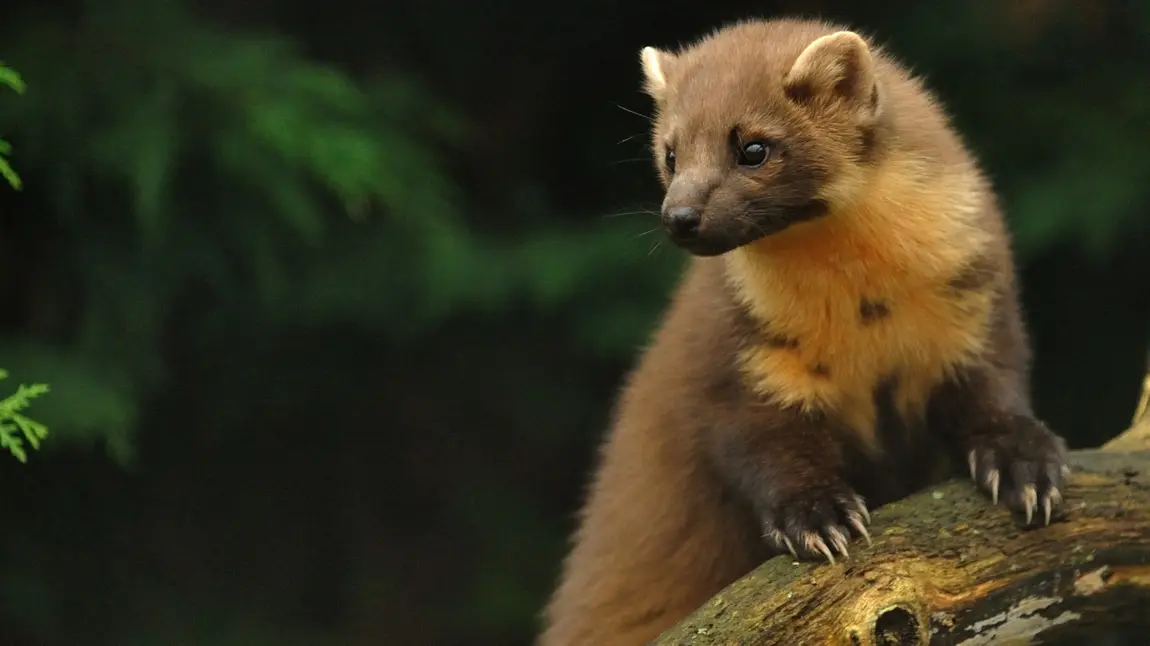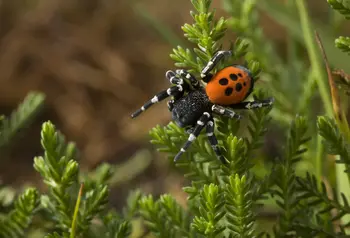National Lottery backs ambitious plan to save 20 threatened species

In one of the most ambitious conservation projects ever undertaken, 20 UK species facing extinction will be brought Back from the Brink thanks to £4.6million from the National Lottery.
Back from the Brink will address the needs of threatened species in 150 key habitats and landscapes across England from the Yorkshire Dales to Cornwall. It will focus on saving some very rare and elusive species from extinction, including the shrill carder bee, chequered skipper butterfly, ladybird spider and northern dune tiger beetle.
The funding will also help a further 200 species that, while not facing extinction, are under threat, including the grey long-eared bat, pine marten, willow tit, large garden bumblebee, lesser butterfly orchid and hedgehog.
Back from the Brink is the first nationwide coordinated effort to bring a wide range of leading charities and conservation bodies together to save threatened species. Natural England, the government’s wildlife advisory body, will work in partnership with Amphibian and Reptile Trust, Bat Conservation Trust, Buglife, Bumblebee Conservation Trust, Butterfly Conservation, Plantlife and RSPB to pool expertise, develop new ways of working and inspire people across the country to discover, value and act for threatened animals, plants and fungi.
In addition, the programme will inspire a nation to discover, value and act for threatened species and take steps to help them.
This ground-breaking programme will:
- safeguard 20 species from extinction
- directly improve the conservation prospects of a further 200
- recruit and teach more than 5,500 volunteers new skills to study, identify and care for threatened species
- engage with landowners and communities to deliver conservation at 150 different locations across England
Natural England’s Chairman, Andrew Sells said: “Back from the Brink represents a groundbreaking approach to nature conservation and we are extremely grateful to the Heritage Lottery Fund (HLF) for having the vision and generosity to support it.
“This is a dynamic partnership which draws on people-power to help save some of our most important species. Natural England strongly supports this approach and is delighted to be part of it.
“Bringing these species back from the brink cannot be achieved by one group alone. But by pooling resources and developing new ideas, this project will add vital momentum to all our efforts.”
Chief Executive of HLF Ros Kerslake said: “I am delighted we are able to fund this important and groundbreaking project. We’re all ultimately dependent on our ecosystem and these creatures are like canaries in the mine. Thanks to a combination of National Lottery funding and expertise from across multiple agencies and conservation charities, we can make a positive and lasting change before it is too late.”
Notes to editors
Why have these species been selected?
Populations of even once common species are being lost from gardens, parishes, districts and counties, while other already rare species are threatened with national extinction. Well over a thousand (1,146) of England’s plant and animal species are in need of help: 361 have been identified as in imminent danger of national extinction while a further 785 are threatened, rare, range-restricted or declining. 943 of these species are on the statutory list of priority species in England under Section 41 of the Natural Environment and Rural Communities (NERC) Act 2006. From these, the partnership has identified the 230 species most in need of action and for which we can make a lasting difference. These are our ‘Priority Species’. Back from the Brink’s focus and mission is with these threatened species.
The programme in numbers:
- Safeguard 20 species from extinction
- Directly improve the conservation prospects of a further 92 threatened species
- Benefit an additional 112 threatened species
- Reach 1,290,000 people through digital and social media via a central digital platform that communities contribute to
- Engage 59,400 people directly
- 5,850 will be taught new skills, including recording, identification and habitat management
- Teach a further 8,600 new skills through digital or indirect contact
- Deliver 7,030 volunteer days with 2,930 volunteers
The full list of 20 species to be saved from extinction:
Black Click Beetle; Field Wormwood; Shrill carder bee; Interrupted brome; Matted bryum; Chequered Skipper butterfly; Northern dune tiger beetle; Ladybird Spider; Narrow headed ant; Royal Splinter Cranefly; Variable Chafer; Moccas beetle; Oak Click Beetle; Violet Click Beetle; Grey carpet moth; Bearded False Darkling Beetle; Cosnard's Net-winged Beetle; Purbeck Mason Wasp; Prostrate Perennial Knawel.
The additional 200 species that will be helped include:
Large Blue butterfly; Large garden bumblebee; Natterjack Toad; Stone Curlew; Southern Damselfly; Lesser Spotted Woodpecker; Duke of Burgundy butterfly; Sand Lizard; Black-tailed Godwit; Woodlark; Lesser Butterfly Orchid; Brown long-eared bat; Grey Long-eared Bat; Greater horseshoe bat; Willow Tit; Marsh Tit; Adder; Pine Marten; Pasque Flower; Corn buttercup; Sky Lark; Slow-worm; Potter flower bee; Corn Bunting; Cirl bunting; Yellowhammer; Reed bunting; Hedgehog; Brown hare; House sparrow; Tree sparrow; Grey partridge; Great crested newt; Motteld bee-fly; Lapwing; Common Lizard.
Individual projects include:
Adding Diversity to Dorset's Heaths
- We’ll restore and expand vital places to help Dorset’s specialist threatened species
- We’ll provide action, advice and share skills on what these species need
- We’ll celebrate heathlands, deepening people’s engagement with this fascinating landscape
Colour in the Margins
- We’ll work where our most precious wildlife is found on farmland, including Cornwall, Somerset, Wessex, the North Downs, Devon, Norfolk and the Yorkshire Wolds
- We’ll bring back locally extinct plants
- We aim to inspire people about the cultural legacy of these plants and encourage them to get involved in their conservation
- We’ll create lasting partnerships between landowners and volunteers, empowered to help a range of wildlife
Cotswolds Limestone Grassland
- We’ll restore a network of limestone grassland sites that support a range of threatened species and bring the Large Blue and Marsh Fritillary butterflies to new sites
- We’ll inspire people to discover these species and help save them
Gems in the Dunes – Saving Sefton’s Threatened Wildlife
- Management at priority sites will aid the recovery of key species
- We’ll train and empower volunteers across the Sefton Coast to help local communities to discover, value and act for their natural heritage
Restoring Rockingham Forest's Species
- We’ll restore and manage 11 woodland sites, increasing the distribution and awareness of target species
- We’ll reintroduce the Chequered Skipper butterfly to England
- We’ll provide opportunities to volunteer
Shifting Sands – Securing a Future for the Brecks
- Management of Breckland grass heaths
- We’ll improve the conservation methods for key species such as Field Wormwood and Prostrate Perennial Knawel
- We’ll inform and inspire volunteers, landowners and managers about threatened species in the Brecks
Core Partners
Natural England, Bumblebee Conservation, Plantlife International, RSPB, Buglife, Butterfly Conservation, Amphibian and Reptile Conservation Trust, Bat Conservation Trust.
22 additional delivery partners include:
Wildlife Trusts, Crown Estate, MoD, National Trust, Woodland Trust, Kew Millennium Seed Bank, Network Rail, Sefton Council, University of East Anglia, Vincent Wildlife Trust, private estates and golf clubs, Wildscreen, Forestry Commission.
Further Information
- Morag Walker, Natural England, via tel: 07736 124097 or emaIl: morag.walker@naturalengland.org
- Simon Oliver, HLF, via tel: 0207 591 6032 or email: simon.oliver@hlf.org.uk
